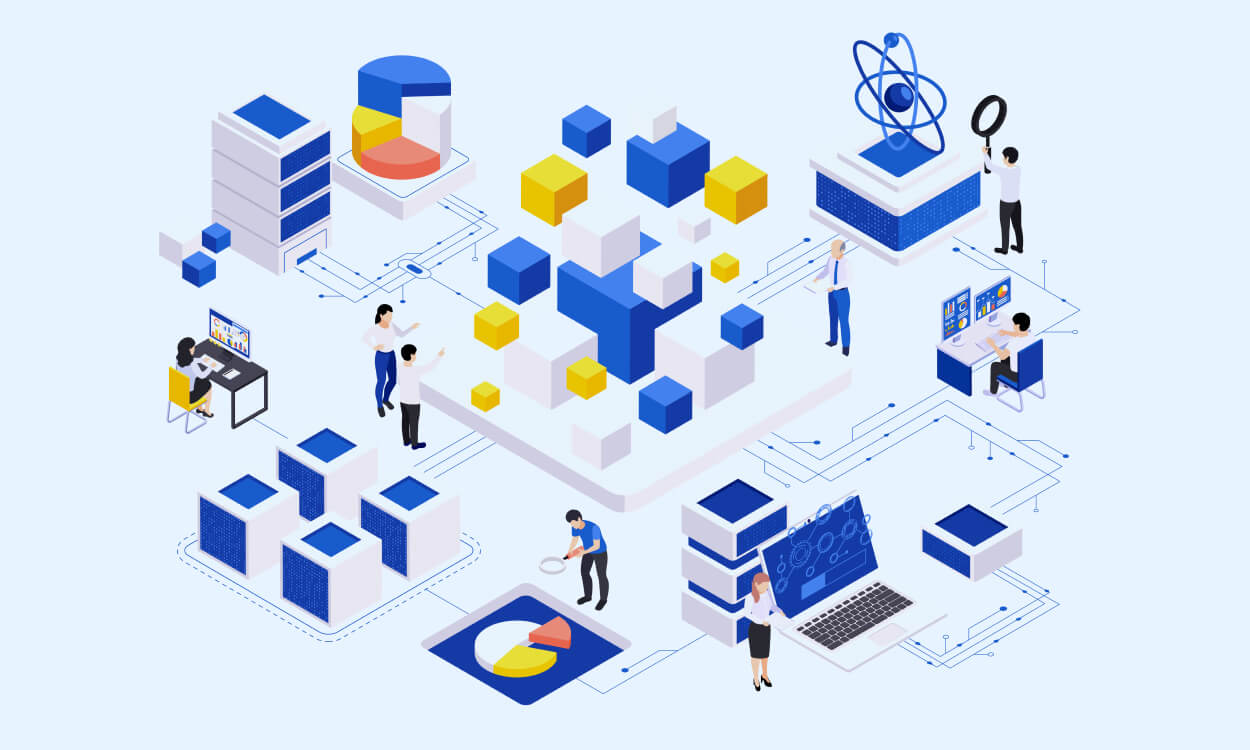Microservices Architecture: Benefits and Challenges
August 7, 2024
In the age of advances in technology, companies have experienced a digital renaissance. Customers are increasingly interacting with businesses via mobile devices and social media platforms, and they want a greater level of service. This has caused firms to reconsider how they operate in order to fulfill client expectations. One way businesses are changing the way they work is by recognizing the advantages of microservices.
What are Microservices?
Microservices application design divides a monolithic application into component functions or services. After identifying the distinct services, developers restructure the monolith so that each service operates independently as a “microservice.” They then loosely connect these microservices using APIs to create a larger microservices-based application.
The resulting microservices-based solution features a pluggable architectural approach. This architecture allows for quick, cost-effective updates, making it easier and less expensive to scale one area of the application. Importantly, you may do so without disrupting the rest of the application.
Developers typically run each microservice in a container on a cloud-based service like Amazon AWS. Then, using container orchestration solutions like Kubernetes, they efficiently assign processing power and other resources to the containers as needed.
What are the Advantages Of Microservices Architecture?
Improved scalability
One of the problems with monolithic applications is that if there is a rise in user traffic, it affects all elements of the application and may cause the entire app to fail.
Because each service in a microservices architecture may be scaled separately, resources are distributed more efficiently based on the demands of each component, resulting in greater scalability compared to monolithic structures.
In the event of increased user traffic, a corporation can automatically allocate more resources to that specific service.
Increased flexibility and agility
Because each service can be iterated independently without affecting the whole application, the development process becomes more flexible and agile, allowing for shorter development cycles.
Developers may deliver new features and upgrades to a specific service without having to deal with coding conflicts or redeploying the entire system.
Fault isolation
As previously said, because each service in a microservices design is separate, a failure in one service does not cascade throughout the entire system, making it easier to identify and resolve issues and, as a result, making the system more reliable.
Circuit Breakers allow developers to prevent cascade failures, thereby shutting down a service. This allows the system to avoid draining server resources for a failing service.
Diverse technology
A monolithic application is created with a single technological stack, which might be restrictive.
Because each service in a microservices architecture is independent, it may be created using a variety of languages and frameworks, allowing developers to select the best tools for each service.
This increases flexibility and efficiency since developers can utilize the technologies they are most comfortable with.
Furthermore, because microservices may be implemented in any programming language, they may be easier to connect with older systems and leverage existing business-critical processes and functions.
Improved data security
Because each service in a microservices design is independent, it is easier to apply security measures at the service level rather than having to store all data in a single database, as in monolithic apps. To connect each microservice, development teams will employ secure APIs, ensuring data protection.
Challenges in Microservices Architecture
Increased complexity
While microservices provide various benefits, they also add complexity. Managing many services necessitates effective orchestration and coordination. Developers must handle distributed data management, service discovery, load balancing, and inter-service communication, which can be difficult without the proper tools and experience.
Data Consistency
Maintaining data consistency across many services presents a considerable problem. It might be difficult to preserve transactional integrity and synchronize data in a distributed system. To successfully solve these concerns, developers must use solutions like eventual consistency, distributed transactions, and sagas.
Implementation and Testing
Deploying and testing microservices can be more difficult than with monolithic architectures. Each service has its own deployment pipeline, which necessitates close cooperation. Automated testing frameworks and CI/CD processes are required to ensure that services integrate seamlessly and that modifications do not cause regressions.
Network Latency and Security
Inter-service communication via a network causes latency and may expose security vulnerabilities. Developers must build secure communication protocols, gracefully handle network failures, and enhance API call performance to reduce delay.
Team Collaboration
Teams must collaborate well when using microservices. Because each team may be responsible for different services, coordination and communication are essential. Clear interfaces, documentation, and shared development methods are critical for ensuring easy collaboration and avoiding integration difficulties.
Best Practices for Building Microservices
Microservices can be difficult to develop and deploy. Here are some best practices for developing and deploying microservices to avoid common mistakes and maximize the benefits of this architecture.
Keep Services Small and Focused
One of the most significant advantages of microservices is that they increase modularity by splitting down a monolithic application into small, independent components. However, in order to stay manageable, services must be kept small and focused. A decent rule of thumb is for each service to have a single responsibility.
Define Service Interfaces Carefully
Another essential concern when developing microservices is how they will interact with one another. To ensure that service interfaces are well-documented and simple to use, they must be precisely defined. Furthermore, you should consider adopting standard protocols like HTTP or gRPC to ensure that services can communicate independent of programming language or platform.
Use an API Gateway
An API gateway is a type of proxy server that serves as a single point of access for clients to various services. An API gateway can simplify your architecture and boost performance by lowering network traffic. An API gateway can also provide extra services like authentication, rate limitation, and monitoring.
Use Version Control for Services
Version control is crucial for any software development projects, but it is especially important when dealing with microservices. This is because each service has its own codebase and requires independent management. You should use a version control system like Git to track changes and ensure that each service can be deployed independently.
Implement Continuous Integration and Delivery
Continuous integration (CI) is the technique of frequently merging code changes in order to maintain a functional version of the codebase. Continuous delivery (CD) takes this one step further by automating deployment processes, allowing code changes to be delivered to production rapidly and easily. CI/CD ensures that defects are discovered and repaired fast, which is especially critical in a microservices architecture with different codebases to manage.
Wrapping It Up
The microservices architecture provides a compelling approach for developing scalable, flexible, and maintainable systems. However, it also brings obstacles that necessitate careful analysis and planning. Organizations may fully realize the potential of microservices to promote innovation and meet business goals by recognizing the benefits and solving the constraints.




